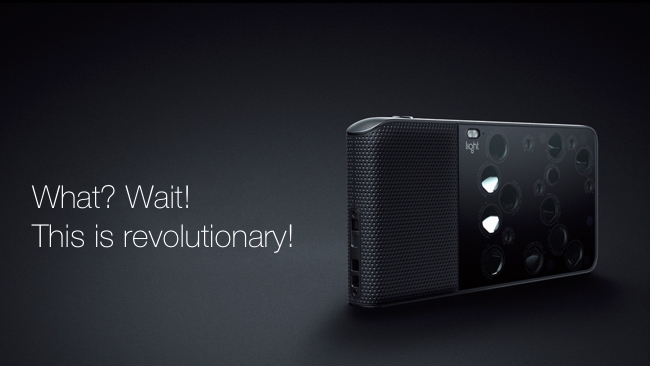
Upstart camera maker Light is debuting an entirely new breed of camera that relies upon computational photography and multiple lenses - 16 of them - to take its rumored 52MP images. [Update - shoots 4K video as well!]
It's time for a revolution in cameras. And here's the first evidence that it's happening. If the claims made by Light about its L16 camera are true, then all bets are off.
You can tell immediately that it's not a "normal" camera. There's no single lens sticking out from the front, and it looks more like an FM radio rather than something you could take a photographic masterpiece with. but the area with the multiple optical elements at the front looks like something from another planet.
No, this is no ordinary camera. It's the first shippable example we've seen of something that you're going to become increasingly familiar with: Computational Photography.
Are sixteen lenses better than one?
If you're not overly technical, don't get hung up on that phrase. What it means is much simpler than it sounds. We'll come back to it in a minute.
First, this is a camera that's little thicker than two smartphones. Its thinness comes from having a 45 degree mirror in front of the lenses, that allows the optical units to be perpendicular parallel to the front of the camera. We're told that it has the power and quality of a DSLR. Some reports say that it will have an equivalent resolution of up to 52 megapixels. But it does much more than that.
If what we're told is true, then you can use this device, which contains sixteen lenses, to take pictures that you can alter in fundamental ways after the event.
We've seen the ability to retrospectively alter focus before with the lytro cameras.
But the L16 seems to go a long way beyond that, because while the lytro devices were clever, they didn't have the best resolution.
This new device shows off the potential of computational photography to take all of the optical data from an irregular array of up to sixteen lenses and sensors (normally around ten in use at each time) to make a pretty flawless composite photo that has enough data to, for example, alter the depth of field after the picture has been taken.
Converging technologies
This has been coming for a long time. To some extent, some of these techniques are available in more conventional cameras. You find it in modern fixed-lens cameras where the on-board software's intimate knowledge of the fixed lens means that it can correct defects like chromatic aberration and barrel distortion.
And processing power has been increasing exponentially, too.
It looks like we've reached the time when enough processing power, coupled with up-to-date knowledge of how to manipulate composite images, have converged to allow a portable camera like this to be built and sold as a product.
It's likely that none of the sixteen lenses individually can compare with a single high quality DSLR lens, but in combination, there's more than enough data to assemble a very high quality image.
This is going to be an actual, shipping product. Right now, it seems very exciting. It's not going to be cheap – about the price of a mid-range DSLR. But that might be entirely reasonable for such a mobile camera with talents like this.
What you're all wondering...
So, what about video?
[Update]
At first we didn't think the camera recorded video, but then RedShark Commenter "Diede" pointed out that in the FAQs on Light's website it does say that it does record 4K video. There are no details beyond that - so I guess there are still a lot of questions, including Diede's own very good one, which is "is it possible to set focus and exposure in post?".
Click here for more information about light and the L16